How Do Chemists Know Which Atoms and How Many Atoms Are in a Molecule?
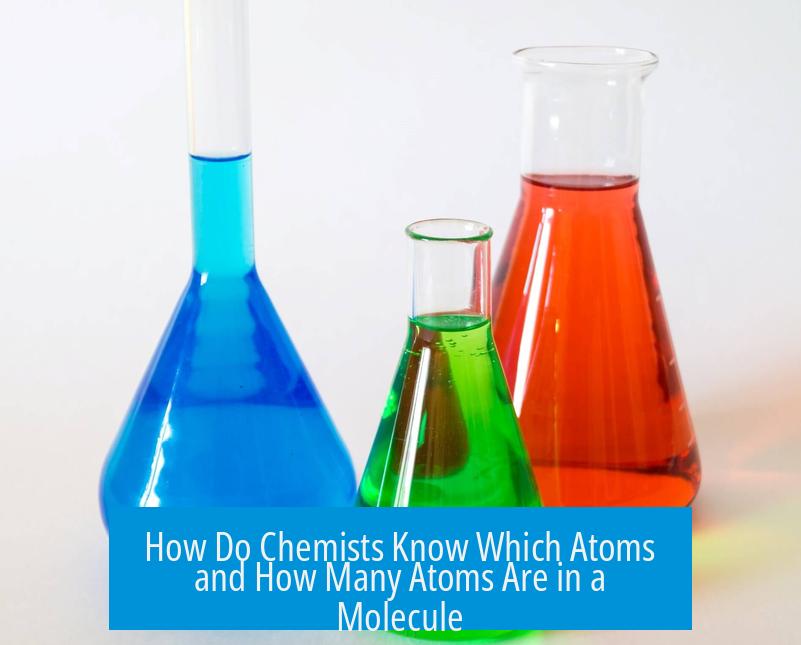
Chemists determine the types and numbers of atoms in a molecule by integrating multiple analytical methods that provide complementary evidence. These include instrumental techniques such as mass spectrometry, nuclear magnetic resonance (NMR), and X-ray crystallography, combined with elemental analysis and chemical reactivity tests. This multi-faceted approach ensures a reliable determination of molecular composition and structure.
1. The Principle of Multiple Corroborating Techniques
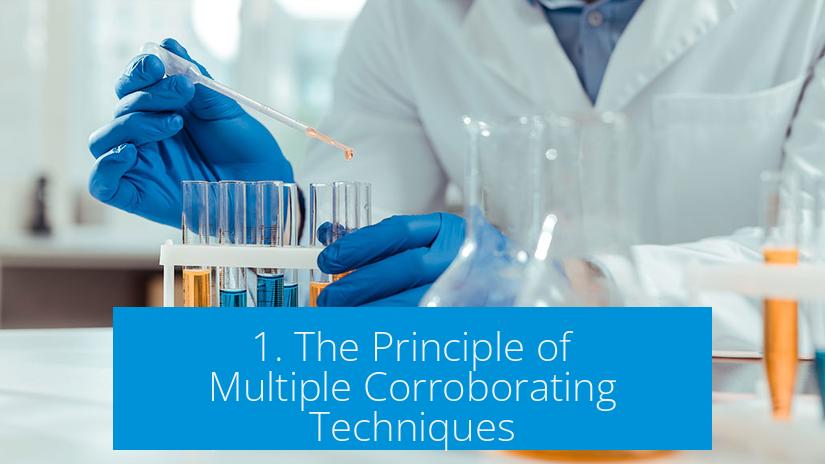
Identifying a molecule requires several independent lines of evidence. No single technique conclusively proves the identity of a substance, so chemists rely on overlapping data. Typically, 2 to 3 complementary methods provide convincing proof of both atomic composition and molecular structure.
- Instrumental data give molecular mass and bonding information.
- Crystallographic data offer spatial arrangements of atoms.
- Chemical reactivity tests validate the molecule’s functional behavior.
2. Instrumental Techniques to Identify Atoms and Atom Counts

2.1 Mass Spectrometry (MS)
Mass spectrometry is central in determining molecular masses and elemental presence. It ionizes molecules to measure the mass-to-charge ratio (m/z) of fragments. Key features include:
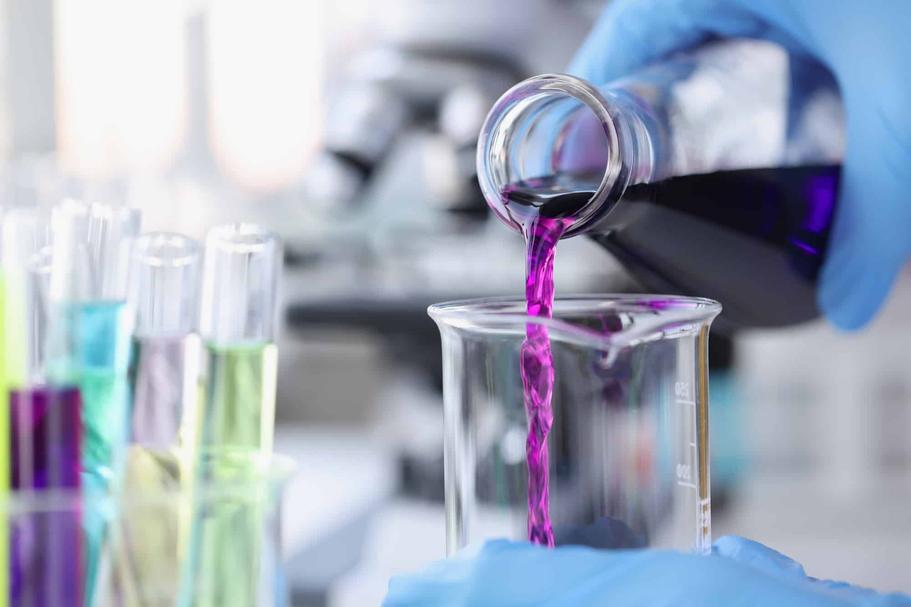
- Molecular ion peak (M+): Provides molecular mass.
- Isotopic patterns: Elements like chlorine or bromine produce distinctive peak patterns due to naturally occurring isotopes.
- High-resolution MS (HRMS): Measures mass with four decimal places, allowing precise determination of molecular formula by distinguishing formulas with very similar masses.
MS enables chemists to calculate the number of atoms once the molecular formula is known.
2.2 Nuclear Magnetic Resonance (NMR) Spectroscopy
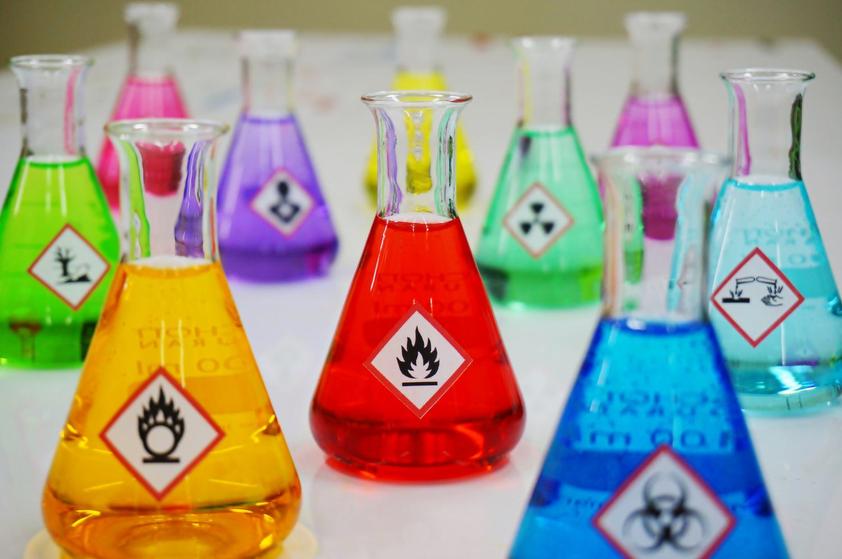
NMR reveals the chemical environment of atoms, especially hydrogen (^1H) and carbon (^13C). By observing the frequencies at which nuclei resonate in a magnetic field, chemists infer how atoms connect:
- Identifies types of hydrogen/carbon atoms and their environments.
- Determines structural motifs like rings, chains, or functional groups.
- Provides relative quantification of atom types based on signal integration.
NMR complements MS by giving information on bonding rather than just formula.
2.3 Infrared (IR) and UV-Visible (UV-Vis) Spectroscopy
These techniques assess bonds and functional groups:
- IR absorbs frequencies characteristic of specific bonds (e.g., O-H, C=O).
- UV-Vis indicates conjugation and electronic transitions.
Though not directly counting atoms, they support structural assignments.
2.4 Single Crystal X-ray Diffraction (XRD)
XRD provides a three-dimensional map of electron densities in a crystal, allowing chemists to see atoms’ spatial positions precisely. This technique can:
- Measure bond lengths and angles.
- Distinguish element types through electron cloud density.
- Confirm molecular geometry unequivocally.
XRD is often considered the gold standard for molecular structure but usually combined with other analyses due to the need for suitable crystals and potential limitations.
2.5 Inductively Coupled Plasma Mass Spectrometry (ICP-MS) for Ionic Compounds
ICP-MS quantifies elemental ratios in inorganic or ionic samples accurately. It aids in determining atom counts when molecules are ionic or metal-containing complexes.
3. Elemental Analysis as the Foundation
For organic molecules, elemental analysis—especially CHN analysis (carbon, hydrogen, nitrogen)—forms the basis to determine the empirical formula. The process involves combusting a sample and measuring resulting gases.
By establishing the percent composition of elements, chemists calculate the simplest atomic ratio. Combining this with molecular mass from MS allows derivation of the exact molecular formula.
4. Chemical Reactivity Tests
Chemists test specific reactions to confirm functional groups or molecular identity. For example:
- Burning a sample to distinguish ethanol from water based on flammability.
- Reacting samples with reagents that selectively bind or transform particular groups.
These tests offer indirect evidence supporting the proposed atomic composition.
5. Historical Context of Molecular Discovery
Before modern instruments, chemists used experimental methods to elucidate molecular formulas. For example, water’s formula (H2O) was clarified through:
- Electrolysis by Humphry Davy releasing hydrogen and oxygen gases in a 2:1 volume ratio.
- Gay-Lussac’s and Avogadro’s gas laws establishing molecular volume and proportions.
- Dalton’s law of multiple proportions providing rules for atomic composition.
These foundational experiments involved measuring volumes and reactions, demonstrating empirical atomic ratios without directly counting atoms.
6. Practical and Cost-Effective Methods
Not all laboratories have access to high-end instrumentation. Simple approaches can support atomic determination:
- Measuring melting and boiling points helps infer purity and identity.
- Flame tests and atomic emission spectroscopy identify certain elements.
- Basic voltammetry using redox data can probe chemical properties related to composition.
- UV bulbs and diffraction gratings offer low-cost spectroscopy to observe characteristic absorption patterns.
Summary of How Chemists Identify Atoms and Their Numbers in Molecules
- Chemists combine analytical techniques such as mass spectrometry, NMR, IR, and X-ray crystallography to gather evidence on atomic composition and structure.
- Elemental analysis provides empirical formulas; high-resolution mass spectrometry refines these to exact molecular formulas.
- NMR and IR clarify bonding environments and functional groups but cannot alone specify exact atom counts.
- X-ray crystallography visualizes atomic positions, confirming connectivity and arrangement with high precision.
- Chemical reactivity tests act as functional witnesses to molecular identity.
- Historical methods relied on volume ratios and chemical reactions to deduce atomic ratios long before modern instrumentation.
- Practical methods supplement costly instrumentation, especially where resources are limited.
How Do Chemists Know What Atoms and How Many Atoms Are in a Molecule?
How do chemists know what atoms and how many atoms are in a molecule? The answer lies in collecting multiple lines of solid evidence from various instrumental and chemical techniques, none by itself perfect, but together highly convincing. It’s like solving a molecular jigsaw puzzle where every tool adds another piece.
Let’s take a journey through the chemistry lab—past and present—to see how scientists crack the molecular code. Spoiler alert: The secret sauce is corroborating data.
Picking Apart the Molecular Puzzle: Multiple Corroborating Techniques
There’s no magic wand that reveals a molecule’s atoms all at once. Instead, chemists gather clues using 2 to 3 different methods. The trick? Combining instrumental data with chemical behavior and, when possible, crystallographic evidence.
This approach is now the gold standard in scientific literature. It’s about painting a reliable picture by piecing together diverse, supporting data. Because hey, science loves a good team effort.
Instrumental Techniques: The Chemist’s Toolkit
Imagine having a Swiss Army knife that includes Nuclear Magnetic Resonance (NMR), Mass Spectrometry (MS), UV-Visible Spectroscopy, Raman, and X-Ray Diffraction (XRD). These are the rockstars of molecular identification.
Mass Spectrometry is often the first stop. It measures the molecular mass and provides an isotopic pattern. This pattern is like a fingerprint—it can reveal if elements like chlorine or bromine are present, thanks to their unique M+/M+1/M+2 isotope distributions.
For a finer touch, High-Resolution Mass Spectrometry (HRMS) can capture the molecular mass to four decimal places. This precision lets chemists confirm the exact molecular formula—no guesswork.
NMR spectroscopy, especially proton (1H) and carbon-13 (13C) NMR, maps out how atoms bond together. By “listening” to nuclei in a magnetic field, scientists infer the bonding patterns that define the molecule’s skeleton.
Other spectroscopies like infrared (IR) and UV-Visible help identify functional groups and electronic transitions, further fleshing out the molecule’s identity.
The Crystal Clear Truth of X-Ray Diffraction (XRD)
Single Crystal XRD is a star method when a suitable crystal can be grown. The technique bombards the crystal with X-rays, measuring how they scatter. This data reveals precise bond lengths and angles, directly showing individual atoms’ positions and types.
It’s like literally photographing the molecule. But like any photo, it might blur or miss some details. So chemists pair XRD with other evidence for full confidence.
Putting Chemistry to the Test: Reactivity Checks
Sometimes, chemists test what a molecule does rather than just what it looks like. These reactivity tests demonstrate a compound’s unique chemical behavior.
Simple examples help us relate: Think how burning a match near water doesn’t do much, but over ethanol, it flares up. This distinct reactivity supports the identification of the molecule.
Elemental Analysis: Counting Atoms One by One
To find the ratio of elements in organic molecules, chemists rely on Elemental Analysis, often called CHN analysis (Carbon, Hydrogen, Nitrogen). This gives the empirical formula by quantifying these atoms precisely.
When combined with mass spectrometry’s molecular mass, the empirical formula converts into a molecular formula. This bridges the gap from ratio to absolute numbers.
Mass Spectrometry’s Role in Atomic Composition
Beyond molecular mass, MS can detect the presence of specific elements by analyzing isotope patterns—chlorine and bromine’s characteristic M+ peaks stand out like neon signs.
High-resolution MS nails down the molecular formula by giving an exact mass. It’s like weighing a molecule on a super-accurate scale, down to a fraction of an electronvolt.
NMR and Other Spectroscopies Reveal Bonding
NMR, IR, and UV-Vis spectra illuminate the bonding patterns inside molecules. Each bond type dances to a unique frequency of light or magnetic resonance, allowing chemists to map molecular architecture.
For instance, proton NMR shows how many hydrogens are in distinct environments, while 13C NMR reveals the carbon framework inside the molecule.
X-Ray Crystallography in Detail
For inorganic or ionic compounds, crystallographic techniques offer even richer data. X-Ray diffraction reveals the compound’s crystal structure, space group, geometry, and how atoms pack together.
This is invaluable for complex molecules where the arrangement of ions or metal centers defines functionality.
ICP-MS: The Ionic Compound Specialist
For ionic substances, Inductively Coupled Plasma Mass Spectrometry (ICP-MS) measures elemental ratios precisely. It verifies the exact elemental makeup, critical for materials science and coordination chemistry.
A Glimpse into History: The Science Behind the Molecule
Long before fancy machines, early chemists laid the groundwork with clever experiments. Humphry Davy performed electrolysis on water, showing it splits into hydrogen and oxygen gases in a 2:1 ratio.
Cavendish confirmed this by mixing exact volumes of hydrogen and oxygen, observing water formation. Gay-Lussac and Avogadro’s laws refined understanding, leading to water’s chemical formula: H2O.
John Dalton’s law of multiple proportions further explained elemental ratios in molecules—a precursor to modern stoichiometry.
It’s humbling to realize these insights came without mass spectrometry or X-ray diffraction. Reproducing those experiments today requires skill and care.
Simple and Cost-Effective Techniques for Non-Chemists
Not every molecule needs a million-dollar instrument. Sometimes, boiling and melting points provide clues.
A Butane torch can perform a flame test, revealing atomic emissions as colored flames—elements’ signature colors.
Building a simple electrochemical cell with a voltmeter and using redox tables can probe reactivity. Potassium permanganate tests detect organic compounds.
Cheap diffraction gratings and UV bulbs help gather spectral data at low cost. Even surface tension and refractive index measurements, possibly done with DIY setups, provide useful physical property data.
Summary: How Chemists Piece It Together
- Corroboration is key. Chemists combine at least two to three methods like instrumental techniques, crystallography, and reactivity tests.
- Elemental analysis (CHN) finds the atom ratios. Mass spectrometry confirms molecular mass and elements present.
- NMR and IR spectroscopies map bonding. X-ray crystallography visualizes atomic placement.
- Historical experiments show how simple measurements built big knowledge.
- Not all techniques are expensive. Simple physical and chemical tests can guide early identification.
Final Thoughts
Figuring out what atoms and exactly how many make up a molecule is a detective story. It demands a mixture of clever tools, old-school experiments, and cross-checking evidence. Modern chemistry thrives on this synergy.
Next time you see a formula like C6H12O6, remember the invisible instruments and historical giants who made that knowledge possible. Science is a team sport—between methods and between minds.
Feeling inspired to dig deeper? Grab a spectral chart or even just a household flame. You might just start your own molecular investigation today.
How does mass spectrometry help chemists determine the number and types of atoms in a molecule?
Mass spectrometry measures the molecular mass and isotope patterns. These patterns reveal the presence of elements like chlorine or bromine. High-resolution MS gives the exact mass, aiding in confirming the molecular formula.
Why is single crystal X-ray diffraction considered strong evidence for molecular structure?
X-ray diffraction measures bond lengths and angles directly. It provides a detailed 3D map of atom positions in the crystal. While powerful, it usually needs backup data from other methods.
How do chemists use elemental analysis to find a molecule’s formula?
Elemental analysis (CHN) determines the percentage of carbon, hydrogen, and nitrogen. This data helps calculate the empirical formula. When combined with mass data, it confirms the molecular formula.
What role do NMR and other spectroscopic techniques play in identifying atoms within a molecule?
NMR detects how atoms are bonded by analyzing magnetic environments of nuclei. Infrared and UV-Vis spectroscopies reveal bonding patterns by measuring light absorption at different frequencies. Together, they clarify molecular structure.
Can chemical reactivity tests confirm the identity of a molecule?
Yes, unique chemical reactions can support a proposed structure. For example, comparing how a compound reacts to burning can distinguish similar molecules. Reactivity complements instrumental methods.


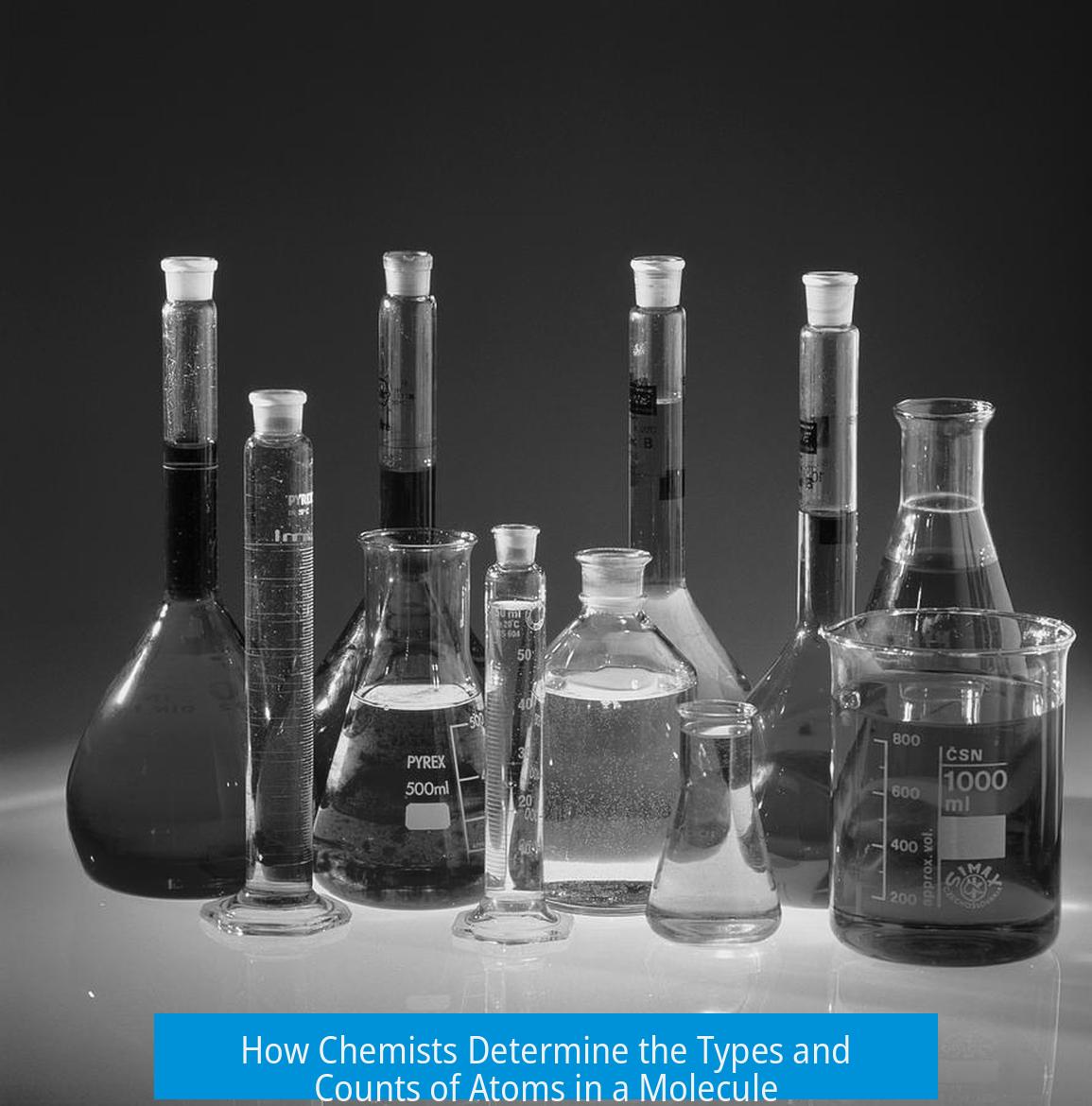

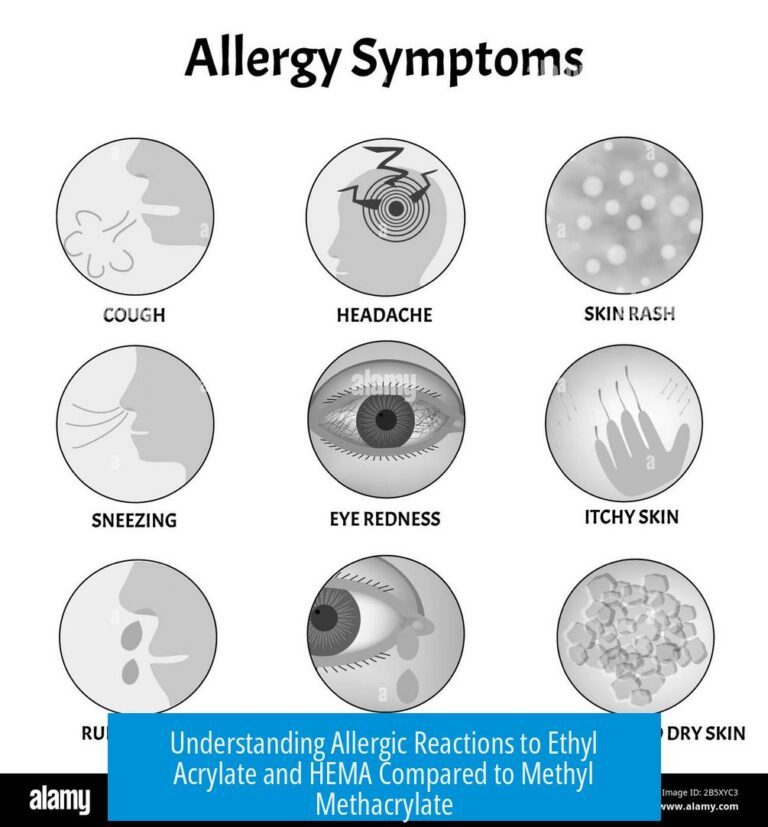
Leave a Comment